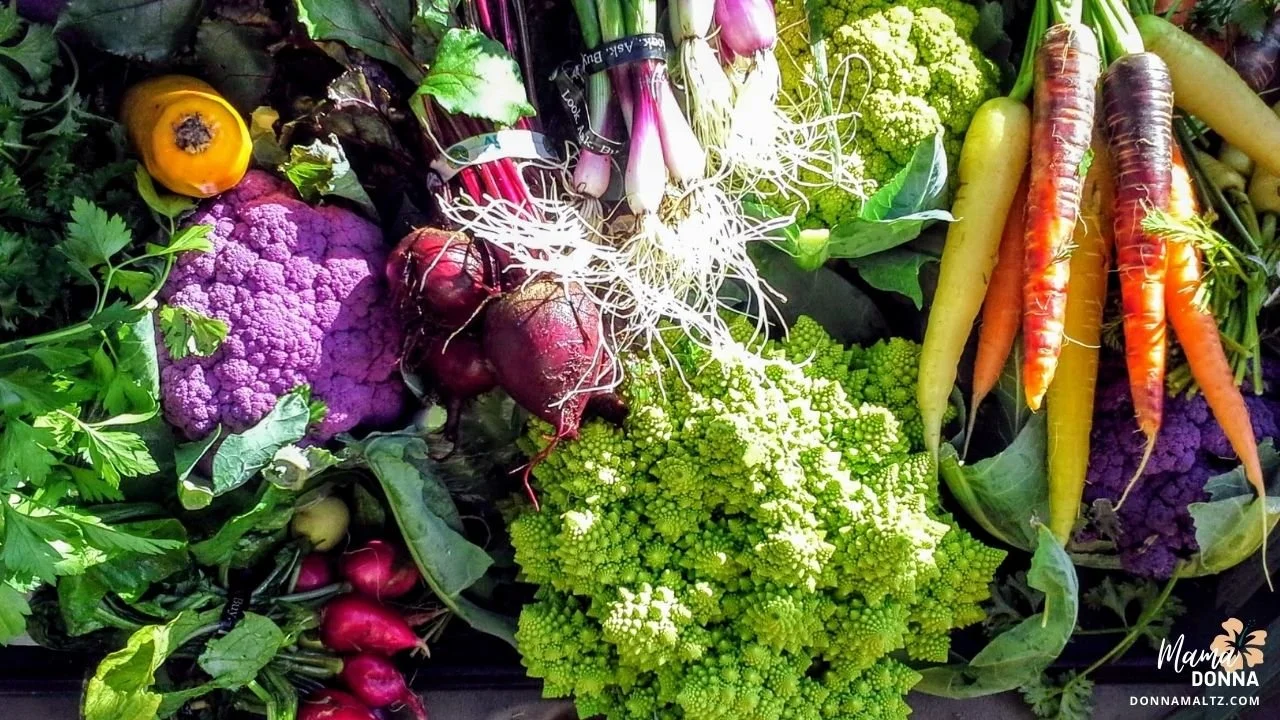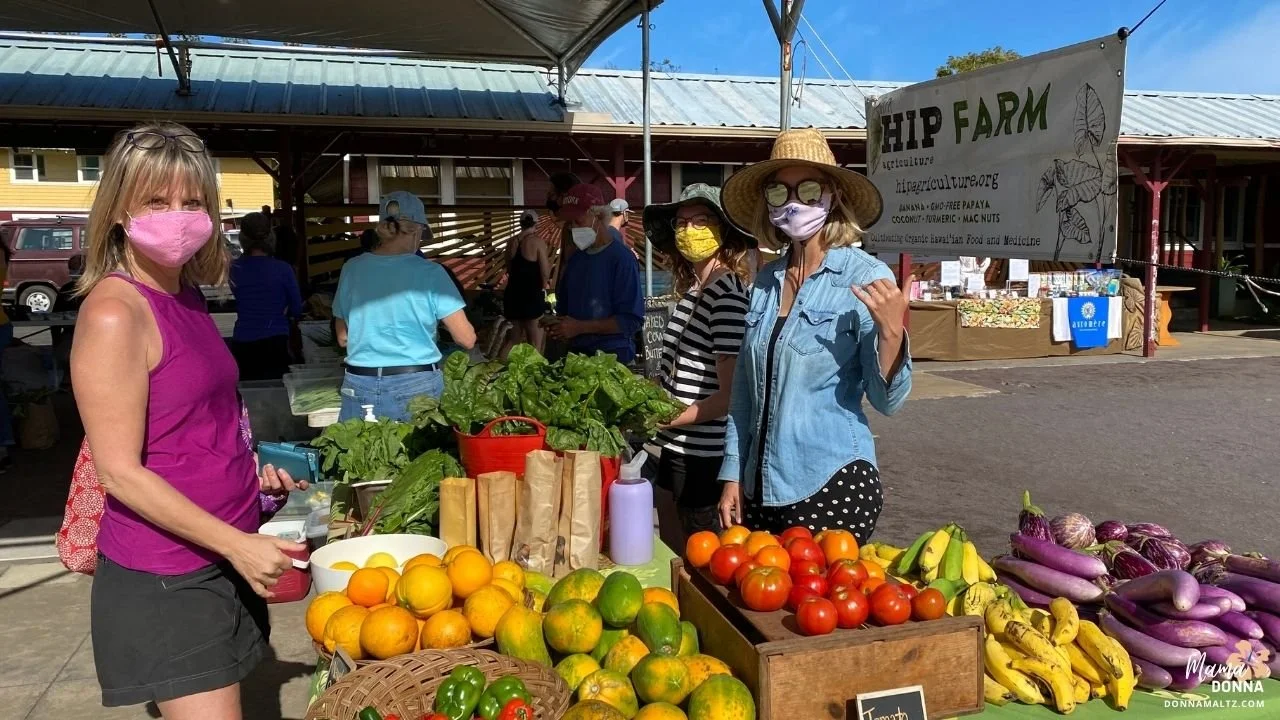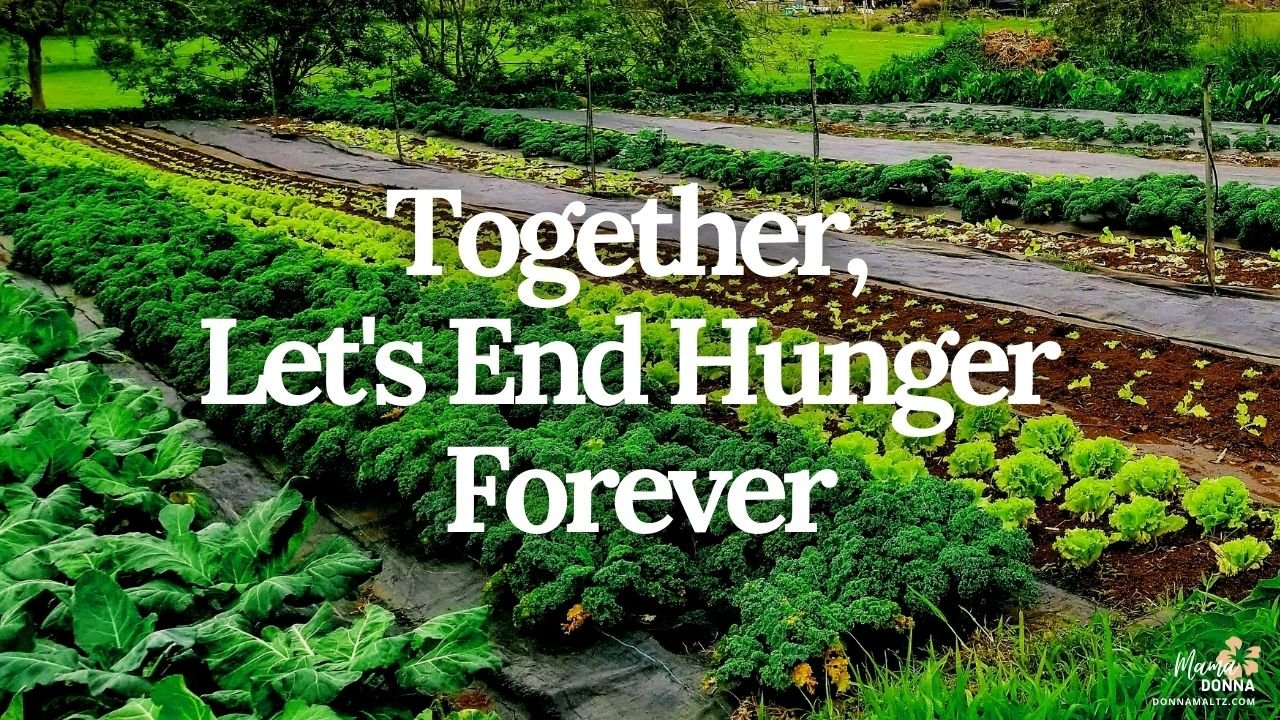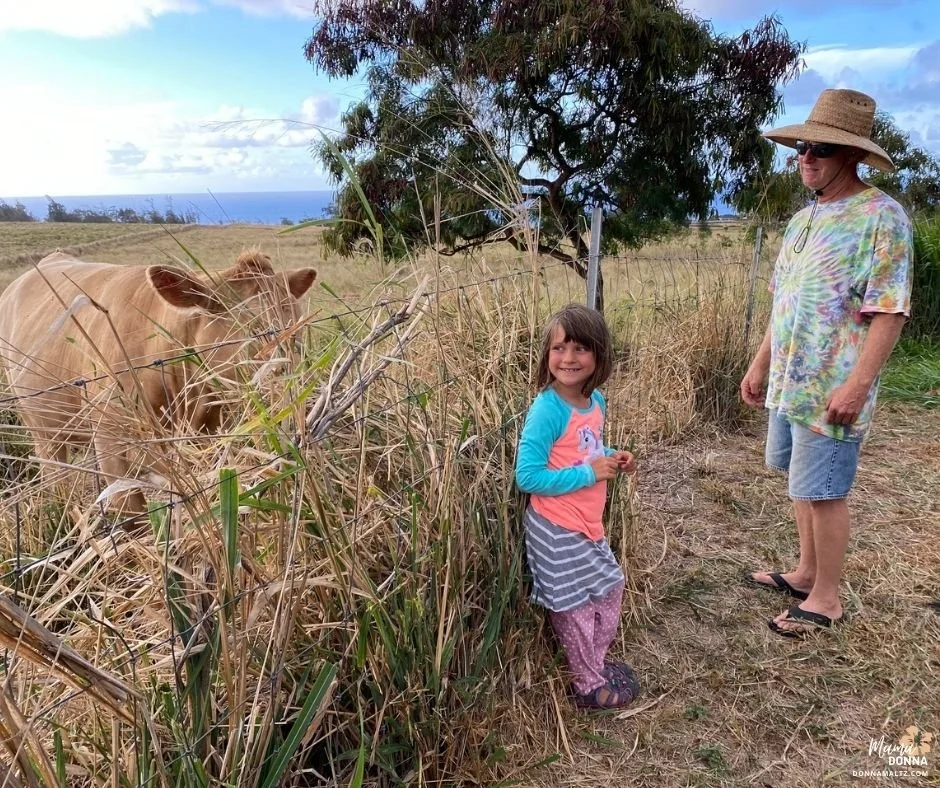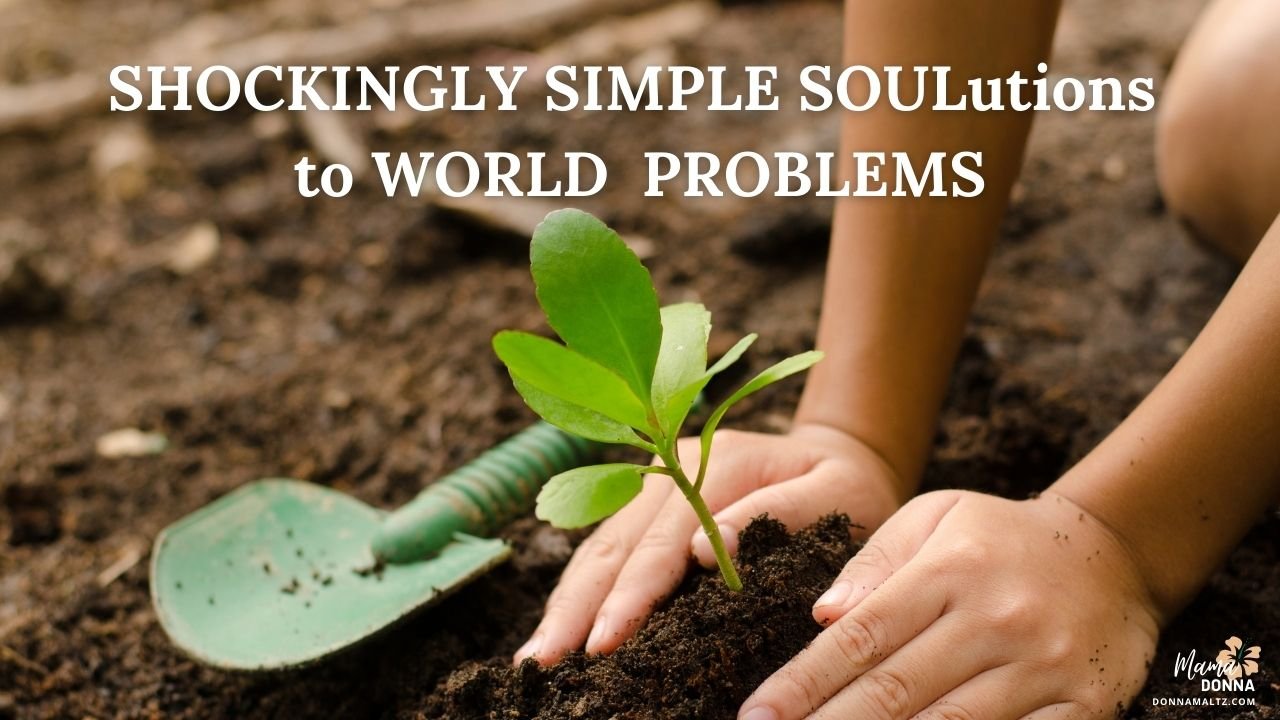Eat To Live, Not Live To Eat
Pay regenerative farmers NOW or the pharmaceutical company's later.
Aloha Beautiful Souls,
I love everything about food except that everyone can not indulge as I do, and I am on a mission to change this fact.
Although the problems of the world are increasingly complex,
the solutions remain embarrassingly simple.
~ Bill Mollison, "the father of permaculture," researcher and biologist
Food is sacred. Food is medicine, not a disposable commodity to be taken for granted. There are endless opportunities to expand the effort to ensure people have access to healthy food. Raising quality food and stewarding the land is an honorable and necessary profession.
A concerted effort, determination, and courage are necessary to replenish the soil and reset humanity's mindset.
Here are a few things we can all do.
Health is our greatest wealth.
Home health remedies are worth mastering, and we cannot find them in a pharmacy. There are helpful time-tested remedies, like taking an Epsom salt bath that relieves aching muscles and calms our nerves.
Folk remedies and supplements may not cure COVID, but they can make you feel better by relieving symptoms. Many of us find cures using baking soda, food-grade hydrogen peroxide, zinc, vitamin C and D, adaptogens, and apple cider vinegar, to name a few. For more details, check out this comprehensive report from the US National Library of MedicineNational Institutes of Health, July 2021.
Both of my grandmothers taught me some of the best folk remedies that have kept my immune system robust. Jewish penicillin, which is nothing but good old-fashioned chicken soup, has cured almost every cold and flu I ever had.
Bone marrow broth has become another standby remedy, made by slow-cooking bones with a hit of apple cider vinegar to draw out the minerals, and it tastes delicious when doctored up with the right seasonings and vegetables. These nutrient-dense broths are powerhouse sources to build immune systems and a way to use every part of an animal that has sacrificed its life for us.
Eat a low-carbon food-print diet.
"FoodPrint" is a program from GRACE Communications Foundation that works to "advance pragmatic and humane solutions to some of the world's thorniest problems in the food, environmental, and public health sectors." They also inspire sustainable lifestyle changes through trusted science and are dedicated to research and education on food production practices.
Eating a primarily plant-based diet has been essential to regenerate my body, mind, and spirit. A plant-based diet is not just good for our health; it is good for the Earth's health. A healthy, low-carbon food-print diet saves money and keeps us fit.
In a UCLA Sustainability article titled, "The Case for Plant-Based," author Dana Hunnes writes, "Shifting away from animal-based foods would not only add up to 49 percent to the global food supply without expanding croplands but would also significantly reduce carbon emissions and waste by-products that end up in our oceans and as seafood by-products."
Eat all the colors of the rainbow, as diversity is essential to life. Our bodies thrive when we mix things up, and it helps us get a wide variety of nutrients. Listen to your body and notice the subtle signs. The way we eat builds the foundation of our body.
Read labels and stay informed of the origins of your food. Eat more food grown from healthy plants and less food manufactured in a factory, plant, or Big Ag farm field.
Make eating a spiritual act.
Food is sacred—food is life. Our fast-paced lifestyle has demanded poor eating habits. It's easy to sit down and mindlessly gobble a bowl of food. However, when we slow down and consciously consume food, we understand each bite's effects on us and move toward healthier choices.
Find a quiet place, without distractions, where you can sit and enjoy your food. Take the time to breathe when eating. Be mindful of how it feels as it enters your body and through the digestive process.
At each meal, give thanks from the depths of your soul to the plants and animals who gave up their lives for you and to the farmers who feed the world. When possible, meet your meat before you eat.
Rejoice around food with family and friends. It is heartening to see more families coming together in the kitchen. We must be more vigilant in assisting families who do not have access to healthy food and thus are starving or do not have happy home lives or shared family mealtimes. Children deserve and require quality family time and nourishing food to eat.
Support local farmers and regenerative agriculture.
Growing and purchasing food produced locally is more beneficial for our immune system, communities, food supply system, economy, and Mother Earth.
When possible, build a connection with your regional farmers. Or better yet, become one! Supporting local farmers will create more resilient communities as we take power away from mega-corporations and their unsustainable practices and give the people that power. As we rebuild our economy, think of food (energy) as a source of self-reliance.
Encourage young farmers.
Considering that a farmer's average age is fifty-eight, we desperately need younger farmers devoted to regenerative farming practices and aware of the importance of interweaving Nature's cycles.
Sustainable farming is a rewarding occupation that stands in high regard, especially today. Individuals and collectives are waking up by breaking ties with industrial-grown food. They are quitting unsatisfying jobs and starting new enterprises.
Data shows that sustainable farming practices can feed the world and save the planet. Perhaps more intriguing, bio-intensive methods grow farmable soil at a rate sixty times faster than what occurs in Nature. In contrast, conventional modern farming methods deplete farmable soil through wind, water, and chemical erosion.
Regenerative carbon-farming practices can reverse climate change by putting more carbon into the ground than is released into the atmosphere! It is up to us, the consumers, to demand that our food be raised for the people's health and the planet! Multiple studies show we only have 60 years of farmable soil left unless we turn things around.
The growing sustainable farm movement brings hope that the values of raising our food and living in balance with Nature are viable. Thankfully, significant investments are being made in regenerative agriculture.
Check out these resources; Regeneration International, Kiss the Ground, Slow Food, and Indigo Agriculture's developing work with carbon capture.
The more connected we are to our food sources, the closer we get to the long-range Soulutions. In tune with the truth, we are wiser consumers and better stewards of the Earth.
Do not waste food.
Food waste has become an epidemic, and it's everyone's business to prevent it!
Author Dana Gunders of the Natural Resources Defense Council notes that "Getting food from the farm to our fork eats up 10 percent of the total US energy budget, uses 50 percent of US land and swallows 80 percent of all freshwater consumed in the United States. Yet, 40 percent of food in the United States today goes uneaten."
According to the World Economic Forum, there is more than enough food to feed the entire planet's human population; we simply must stop food waste.
According to Project Drawdown, if food loss were a country, it would be the third-largest greenhouse gas emitter, behind China and the US! The annual value of food wasted globally is $1 trillion, weighing 1.3 billion tons.
Stay focused on the next few days and prepare healthy organic ingredients in advance --such as brown rice, beans, and lightly steamed vegetables. You can make multiple healthy quick meals using these healthy ingredients and turn them into Mexican dishes, Mediterrania or Thai by changing the seasonings, adding tofu, temp, organic chicken, etc., in the right portions, rather than a super-sized one order from the McDonald's drive-through window. We won't waste as much food if we are aware and not over-purchasing food and saving time and money.
Preparing a meal with your family makes the experience more inclusive, resulting in less food waste. Food education and shopping with family members also can reduce waste.
Work together to demand an end to hunger.
Dedicated people and organizations are working tirelessly to resolve world hunger and mitigate climate change, but they need our support.
The Worldwatch Institute states, "A fair number of agribusiness executives, agricultural and ecological scientists, and international agriculture experts believe a large-scale shift to organic farming would not only increase the world's food supply but might be the only way to eradicate hunger."
Realize that right now on Earth, there's enough food to feed everyone on Earth. What happens in the food-for-profits Big Ag model, rather than the goal to sustain healthy humans, is that food distribution becomes intentionally limited to boost food profits.
When Big Ag restricts the food supply to increase the price, demand is the catalyst that keeps costs exorbitant. Instead, local small-scale farms can earn significant profits by simply delivering to nearby customers.
Become more self-reliant.
We learned from COVID how to become more self-reliant in our communities. Growing Food, Not Grass is a responsible act inspired by a group called Food Not Lawns, working off the "Food Not Bombs" peace movement, and aims to feed those in need. Suppose you do not have a lawn to turn into a garden; Community Supported Agriculture (CSA) offers a sensible way to get nutrient-dense food while supporting local farmers and community development.
Communities worldwide understand how important it is to localize a fresh, nutritious food supply. City dwellers are prime to reconnect with their food systems in their communities. Opportunities abound to turn vacant lots and flat rooftops into urban gardens. Empty buildings are being converted into vertical farming systems.
"Vertical farming," "low-impact farming," and "urban farming" are just some terms used to describe indoor or city farming. These methods have a smaller footprint than traditional agriculture and create employment within walking distance of apartments or homes. Indoor farming methods give new life to vacant spaces. The way things are going in the COVID era, we can expect to see more lawns, buildings, rooftops, cellars, and even metro tunnels converted into sustainable farms.
We have much to learn from a history of community resilience in the face of disaster. During World War I, the idea of victory gardens was passed around on a grassroots level to meet domestic citizens' needs, while commercial crops were grown to support the war effort. Victory gardens came back during World War II when even the first lady planted a family garden on the White House lawn.
In Cuba, during its devastating 1990 US embargo and the fall of the USSR, a sustainable model of urban agriculture was born. In large cities like Havana, the government could not keep up with people waiting in line for their small weekly allotment. The people turned to urban farming and created food sovereignty out of necessity. But why wait until the food runs out to do something about securing our food chain supply?
It's comforting to know that we have the technology and ancestral wisdom to change how we produce food and employ remedies to nourish and heal ourselves. The more educated we are surrounding these issues, the better decisions we will make.
Start or join an ethical food organization.
Ethical organizations and businesses are fighting hard to turn over the injustice happening to the land and the people.
The Slow Food Movement, composed of millions of people in over 160 countries, is "working to ensure everyone has access to good, clean, and fair food."
Civil Eats is a "news organization with over 150 contributors who report on the evolving food landscape from Capitol Hill to Main Street."
The Food Revolution Network is a hub of over five hundred thousand members with projects that support "healthy, ethical, and sustainable food for all."
Agrarian Trust took an additional step in US community-based farming with the Agrarian Commons, 2,400 acres of collaboratively managed, diversified agriculture in ten states. Their mission is "to support land access for the next generation of farmers."
Food Tank, The Organic Food Association, FoodPrint, and Small Planet Institute are a few examples of noble organizations doing the necessary work to expose the truth about our unjust food systems.
Many others deserve recognition for working on this global food effort, which you can find on my website. Connect and support these Soulution-conscious evolutionaries.
Summary: The bottom line.
Governments and economic systems have manipulated us long enough. Each of us must pressure the corporations and politicians for change. Let us become more educated and aware of everything we consume. When we take action, our physical and spiritual bodies strengthen with integrity.
Just as healthy soil creates the conditions for a tree to grow from seed to maturity, our souls are enriched by how healthy we keep our bodies. Our future relies on collective mass action.
Realizing how our actions affect the entire ecological system and other nations around the Earth, we can make courageous and conscious choices. The world would be a better place if we all ate to protect the next seven generations. What seeds will you plant for them to harvest in the future?
Please consider reading my book Conscious Cures Soulutions to 21st Century Pandemics if you liked this article.
You’re Awesome!
Big Love and Aloha ❤️
Mama Donna
“Why Retire When I Can Inspire”
Donna Maltz is an author, blogger, speaker, culinary chef, and eco-entrepreneur. Her books include Living Like the Future Matter ~ The Evolution of A Soil to Soul Entrepreneur. I AM ~ A Guided Journal to Cultivate Abundance, Conscious Cures~Soulutions to 21st Century Pandemics and Yummy Recipes, Wilderness Wonders, a healthy activity cookbook for kids and adults.
She spends her days immersed in Nature and strives to help make the world a more vibrant place for all sentient beings. As a ‘voice for Nature,’ she shares her love for Mother Earth through words and photography. 🌿


